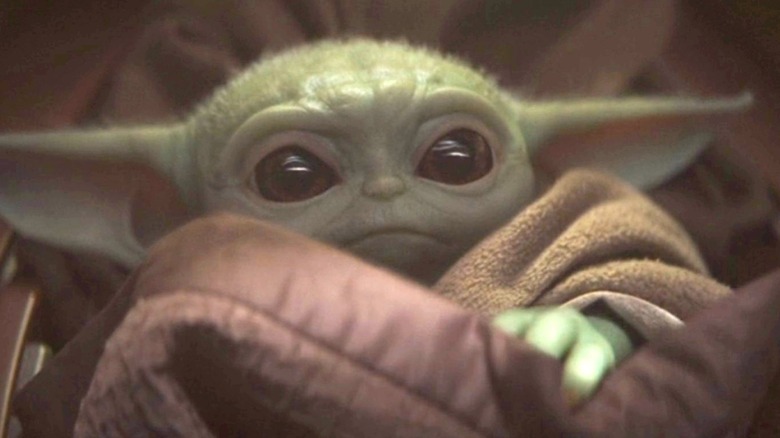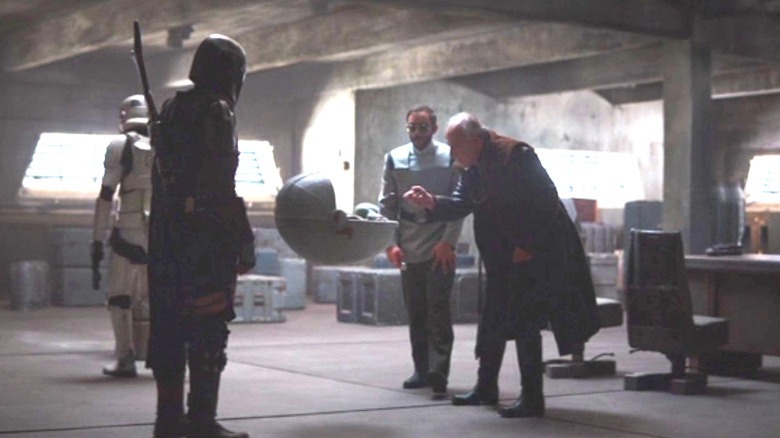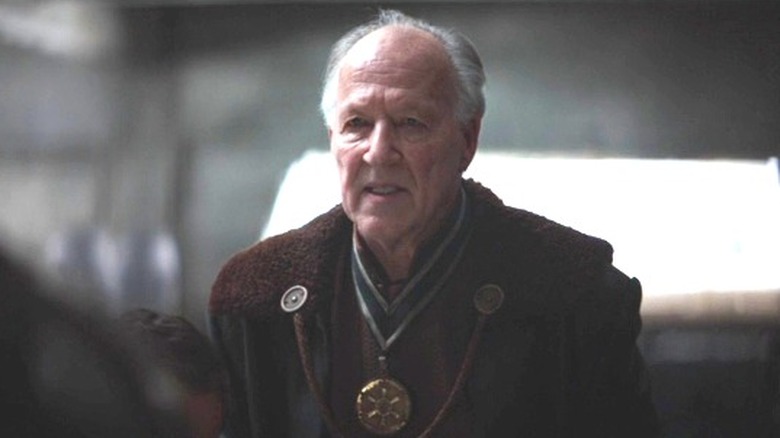Baby Yoda Prompted Werner Herzog To Call The Mandalorian's Creators 'Cowards'
The following post contains spoilers for season 1 of "The Mandalorian."
Grogu, aka The Child, aka Baby Yoda, produces a lot of strong feelings in people. For some, it's the desire to protect him with your life. For others, it's an immediate desire to turn him into a series of memes. For me, the mere appearance of his widdle face makes me giggle and widen my eyes to cartoon levels. There may be hearts floating in them. No one has mentioned it, but I wouldn't be surprised. He probably does the same thing to you.
It doesn't matter if you call him by the name he told Ahsoka (Rosario Dawson), or you refuse to use it like Peli Motto (Amy Sedaris). "The Child" is descriptive, and "Baby Yoda" worked for us, despite the fact that there is as yet no familial connection other than the fact that they belong to the same unnamed species. Behind the scenes, they're both puppets/animatronics (I try to forget that time when Yoda was CGI), and people have thoughts about that as well.
Werner Herzog, who played The Client in season 1 of "The Mandalorian," had some pretty strong opinions about our tiny green buddy. If you recall, in the first season of the series, The Client has Greef Karga (Carl Weathers) — formerly the leader of the Bounty Hunters' Guild, currently the Grand Magistrate of Nevarro — offer a bounty fob to Din Djarin (Pedro Pascal) to get The Child for him for nefarious purposes that involve the fallen Empire.
During a 2019 event at the El Capitan Theatre in Hollywood, California (via The Hollywood Reporter), creators/showrunners Jon Favreau and Dave Filoni spoke about an incident on set that had Herzog calling them "cowards."
'We wanted to try using the old techniques'
As you likely know, Yoda was puppeteered by a team led by Frank Oz, who originally voiced the role in the original "Star Wars" trilogy. He was then rendered via CGI in the second and third films in the prequel series. The decision about whether to use a puppet/animatronics or CGI for Grogu was still being debated at the beginning of "The Mandalorian" season 1 shoot. According to Jon Favreau and Dave Filoni, they weren't quite certain what they were going to choose, so they shot two versions of each scene; one with the puppet and another where he wasn't there.
Favreau said, "We would shoot clean plates. Because we could do a great ILM CGI character if we needed to. We wanted to try using the old techniques, then you could always fall back on the CG one if it didn't work." That didn't sit well with Werner Herzog. He filmed a scene with the puppet and without, and had some things to say about it.
Filoni told the crowd at the El Capitan that Herzog said, "What are you doing?" about the puppet removal for the clean plate shot. Filoni continued, "[Herzog] says, 'You are cowards. Leave it. Leave it.' He was so committed." Favreau added, "It was so awesome."
You go with what works
Werner Herzog was clearly right, though it makes sense that Dave Filoni and Jon Favreau were considering CGI. The techniques have come a long way since the "Star Wars" prequels. These days we have a ton of CGI characters like Groot and Rocket Racoon from the Marvel Cinematic Universe and it's very difficult to tell what's real and what isn't. Still, with a character like Grogu, there is a lot of touch going on. He likes to hug Anzellans and the rest of his friends, and it just makes sense to use the puppet. How anyone gets through a scene without smooching his little ears is beyond me, but there is something about having the real thing in front of you that is ultimately going to produce more natural reactions.
The Client may be long gone in the series, but who knows? Maybe Herzog's dig gave Favreau and Filoni a little push toward puppeteering. Either way, something in the form of Grogu exists tactically, and doesn't that just make the world a little bit better?
"The Mandalorian" is currently streaming on Disney+.


